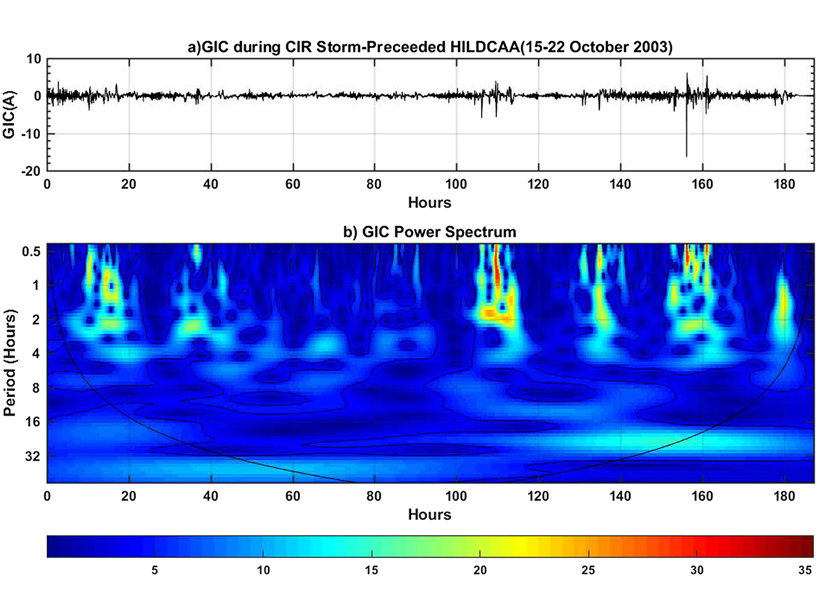Source: Space Weather
The cumulative impact of moderate geomagnetic activity is a somewhat neglected aspect of space weather, compared to the scientific, political and media interest in severe events that could catastrophically disrupt critical infrastructures. Nonetheless there is concern that low intensity, but more frequent, geomagnetic effects can accumulate to degrade some of those same infrastructures, and thus have significant economic impacts.
Khanal et al. [2019] explore the temporal variations of geomagnetically-induced currents (GIC) in a pipeline at mid-to-high latitude during extended (many days) periods of moderate geomagnetic activity, which is driven by fast solar wind that contains many periods of significant southward magnetic fields, due to Alfvén wave activity. These periods, known as High Intensity Long Duration Continuous Auroral-Electrojet Activity (HILDCAA), are generally distinct from geomagnetic storms (though they sometimes follow storms).
The authors show that the GIC variations during HILDCAAs include short bursts of larger GIC on top of a more slowly varying background, both potentially leading to enhanced corrosion of those pipelines. These variations are strongest when the fast solar wind driving the variations is associated with stream interaction regions. This is a valuable study and the results show that the cumulative impacts of space weather need more attention from the research community.
Citation: Khanal, K., Adhikari, B., Chapagain, N. P., & Bhattarai, B. [2019]. HILDCAA‐related GIC and possible corrosion Hazard in underground pipelines: A comparison based on wavelet transform. Space Weather, 17. https://doi.org/10.1029/2018SW001879
—Michael A. Hapgood, Editor, Space Weather
Text © 2019. The authors. CC BY-NC-ND 3.0
Except where otherwise noted, images are subject to copyright. Any reuse without express permission from the copyright owner is prohibited.

